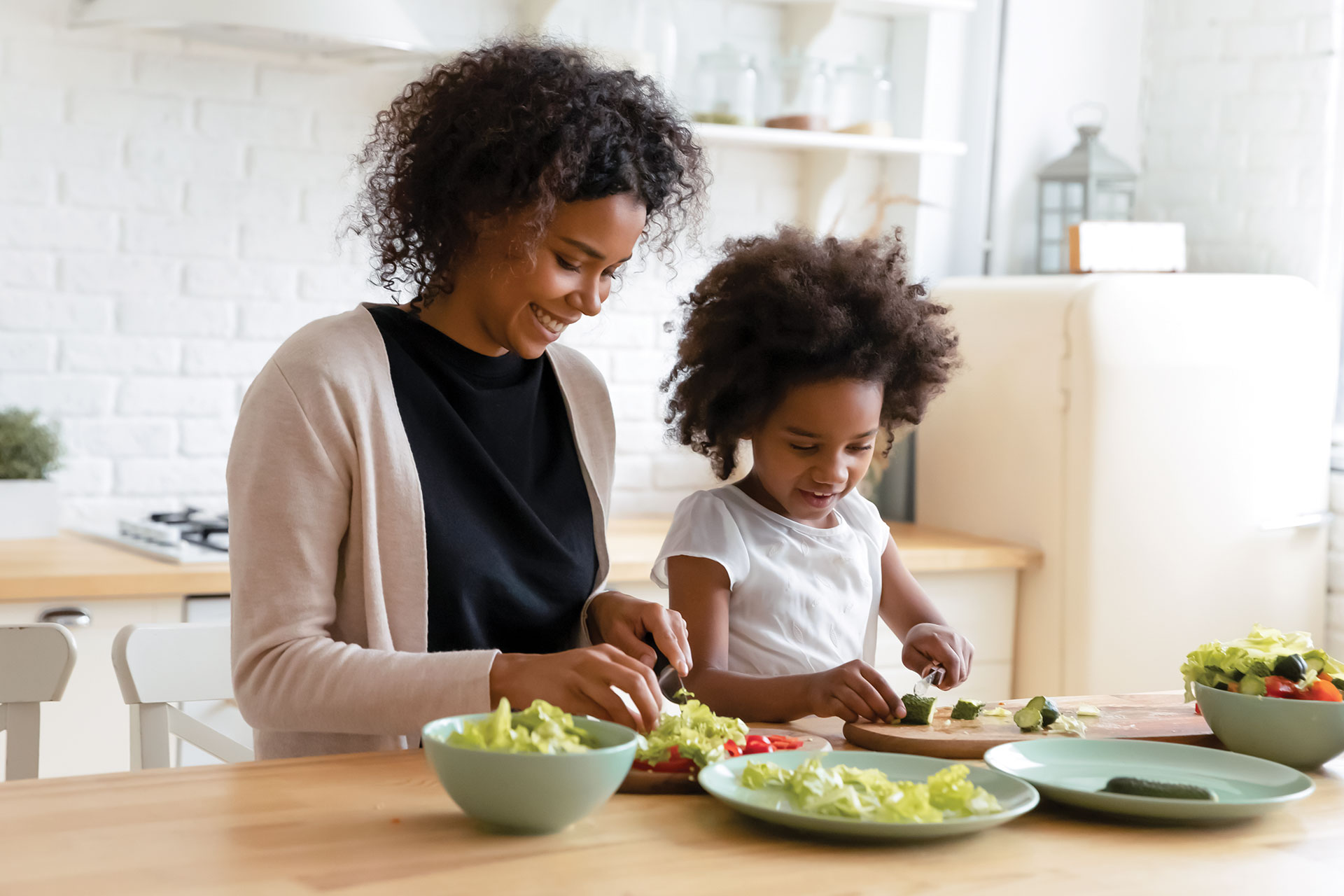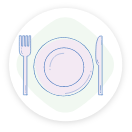If you think about it, we actually start eating before we even take our first bite of food…with our eyes! How our food looks plays a big part in how likely or willing we are to eat it; this is especially true for children. While adults are usually focused on the way their food tastes or smells, kids are more interested in how their food looks. Simply put, if it looks fun, they’ll probably eat it! The tips below provide easy ways for you to create healthy, good-looking plates everyone in your family will love.

How to Make Your Plate Look Great
- Home
- Live Well Blog
- How to Make Your Plate Look Great
May 17, 2023
General /Family
GETTING STARTED:
As a general guide, think of your plate as a clock with fruits and vegetables placed from 6-12 o’clock, grains placed at 12-3 o’clock and proteins at 3-6 o’clock. A smaller plate should be used for children to help their portions be the right size. Don’t forget the dairy — milk or yogurt on the side!
PORTION CONTROL FOR PROTEINS:
Aim for a 3 oz. portion-size of protein for adults and older children. This is a serving about the size of a deck of cards or the palm of their hand, or a 3/4 cup serving of beans. Younger children (under 5 years) can be served half this amount, or the size the palm of their hand. Cut chicken or beef into cubes and thread on skewers before cooking or slice cooked meat before placing it on the plate.
KEEP IT COLORFUL WITH FRUITS AND VEGETABLES:
Choose a variety of fruits and vegetables. Remember — about half your plate will be fruits and vegetables, so the color splash from these food groups will have a big impact. Kids might enjoy their fruit in a small bowl instead of on the plate.
STEAM FOR BRIGHT COLOR:
Your children will prefer to eat brightly colored foods. Keep the vibrant color of veggies by steaming or cooking lightly in the microwave. Most vegetables will cook in less than 5-7 minutes. When they are done cooking, serve them right away or remove them from the hot pan to avoid overcooking.
GIVE GRAINS SOME STYLE:
Round out the final quarter of your plate with whole grains such quinoa, whole wheat tortillas or brown rice. Dress up your whole grains by tossing 1-2 tablespoons of chopped, fresh herbs just before serving. Cilantro and parsley are inexpensive, but add color and flavor. They are also easy to grow in a container.
SHAPES MAKE IT FUN!
Changing the shape of foods can make it easier (and a lot more fun) for little ones to eat. Instead of slicing cucumbers, cut them into spears. Grating carrots or zucchini make them quicker to cook and toddlers can easily pick up with their fingers. No need to make fish cakes round, make them fish shaped. Use cookie cutters to make watermelon flowers!
EVERY PLATE TELLS A STORY:
Use your imagination to create a fun story about the plate. Make your mashed sweet potatoes a hot lava field with a chicken strip bridge across it next to the forest of broccoli trees.
JAZZ UP WHITE FOODS:
Serve potatoes with broccoli and cheese over them, or cook frozen mixed vegetables with rice to add texture and color.
EDIBLE CONFETTI:
A light sprinkle of cheese or dried fruit adds a festive touch to salads, vegetables and grains. Play with colors and textures by topping proteins with pico de Gallo (mixture of chopped tomato, cilantro, onion and lime juice) or fruit salsa.

You don’t have to be a professional chef to perk up a plate. Even the simplest touch can give you a feeling of pride and give your family beautiful food they’ll love to eat!
